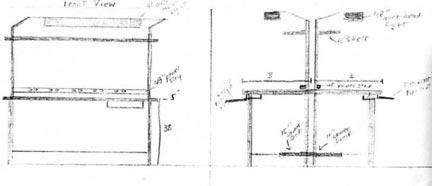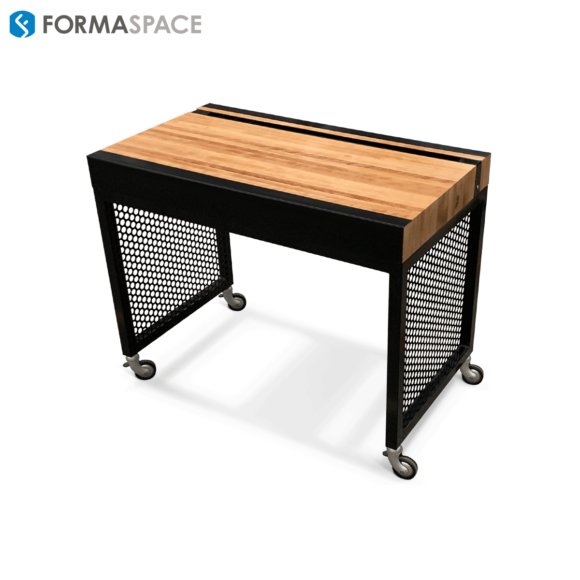Becoming a licensed architect is a long, arduous process, from the long hours gaining valuable experience as an intern to preparing for the Architect Registration Exam (ARE), to passing your state’s licensure exam. However, for many professional architects, there is one more important milestone ahead: opening your own architectural firm – with your name proudly affixed to the door.

Through our work with architect professionals over the years, we’ve uncovered a set of career tips for young architects who want to apply their ambition, talent, and hard work toward launching their own architectural practice one day.
Not every tip applies to every situation, but we think you’ll find these insights both interesting and useful.
1. Use Your Intern Hours Wisely.
The first recommendation comes from those that look back on their many hours working as an intern: make the most of this time. Acquiring as broad a range of experiences as possible will help you establish yourself earlier in your career.
Join and volunteer for the American Institute of Architects (AIA); visit their website to learn about the different ways you can earn experience hours. Opening doors now will pay dividends later in the form of increased career opportunities.
2. Find a Mentor.
Seek out and appreciate mentoring opportunities throughout your career.
Mentors can help teach you things about the real-world of architectural design and construction you’ll never learn in school.
Mentors and other significant role models can help you identify which areas of architectural practice you want to pursue.
They can also lead to significant business relationships that could further your career. It’s not unheard of for a professional mentoring relationship with a senior solo practitioner to lead to a transition plan where you acquire the mentor’s firm upon his or her retirement.
Don’t forget to return the favor when the time comes to pass on your skills and insight to the up-and-coming new generation of architects.
3. Build a House.
Build a house? Really?
Yes.
Classes at top-notch architectural programs do prepare you to work with construction companies.
But in reality, there’s nothing like getting hands-on experience under the leadership of an experienced contractor to learn first-hand about construction details in real-world situations.
You may discover that you have a penchant for residential design – if so, establishing a relationship with the builder early on in your career can be very advantageous.
Want to learn more before working with a contractor? Why not help build a house as a volunteer for Habitat for Humanity?
4. Design and Build Your Own Furniture.
For many successful architects, designing furniture is a lifelong obsession.
Long before you will receive your first design commission, you’ll be able to create furniture designs for your portfolio – with your name on it – that can give you a competitive advantage in promoting your design skills.
If you’ve created a unique design for a workbench, desk, office system, storage unit, you can hire Formaspace to produce a one-off copy, a limited production run, or even a full-production run.
Imagine how installing custom furniture you’ve design on a client project can help establish yourself as an up-and-coming designer – a big step toward creating your own architecture practice.
5. Develop Hand Skills, Not Just CAD Skills.
There’s no question that the arrival of sophisticated software tools like AutoDesk’s AutoCAD and Revit have revolutionized architectural design, drafting, and production workflows.
But if your ambition is to have your own firm, don’t miss the opportunity to develop your own hand drawing skills – the ability to quickly communicate ideas to potential clients or your staff is most important.
Drawing helps our minds create and evaluate ideas in ways that sometimes get lost when working entirely on CAD software at the computer.
To help keep things fresh, consider investing in a drafting table for your workspace – they will inspire your work, inspire client confidence, and visitors will, without a doubt, expect to see drafting tables in use when they walk into an architectural firm.
6. Don’t Forget Old School Model Making: Join a Makerspace.
While we’re on the topic of old school design tools like drafting tables, let’s talk about the role of making physical models of architectural designs.
This approach has never gone out of style – just ask Frank Gehry, who employs a hybrid design process using physical models and 3D CAD design using complex NURBS-based curves.
The advent of 3D printing from your CAD programs adds a whole new dimension that will invigorate your design explorations and presentations.
If you are a student, your firm has limited resources for a 3D printer, or you want to collaborate with other people, consider joining a makerspace that provides access to 3D printing.
7. Embrace the Future of Virtual Reality and More.
If you think the CAD software design and visualization tools that have come into being since the dawn of the PC revolution are impressive, you haven’t seen anything yet.
We’re on the cusp of a new era, where virtual reality simulation experiences are becoming mainstream.
Embrace the new. Here are just two examples:
Virtual reality headsets can help a prospective client understand new design concepts and evaluate them, potentially giving you an edge over other firms.
Sophisticated software for designing architectural lighting can simulate complex lighting scenarios – allowing you to design with light as a primary design tool.
8. Understand Graphic Design.
In a world where young architects using sophisticated CAD visualization tools can prepare photorealistic walk-throughs and visual presentations worthy of Hollywood productions, there is often a problem.
Somewhere along the way they failed to learn basic graphic design.
Nothing can undercut a great presentation faster than poorly composed designs with awkward typography. Take the time to learn how to use fonts and design elements to create eye-catching, powerful graphics.
9. Enter Design Competitions on a Regular Basis.
As you progress through your college training and internship years, design competitions can help you create a name for yourself and establish connections with the industry.
For example, the AIA and the Industrial Design Society of America (IDSA) have ongoing contests.
Your portfolio deserves it.
10. Prepare for the Business Side of Architecture.
If your ambition and talent are leading you toward creating your own architectural practice, don’t overlook the need to obtain a sound foundation in business practices.
In addition to learning the business side of architecture, you should gain an understanding of the financial considerations facing your clients as well.
For example, a deeper understanding of how financing and tax credits work in commercial or residential projects will help prepare you to be an active ‘problem solver’ when working with complex client projects – another way you can set yourself apart from the crowd.
11. Conduct Market Research to find your Niche.

As your career advances and you make plans to launch your own architecture practice, you’ll need to learn where the highest market demand – or ‘sweet spot’ – for your service lies.
Learn how to research demographic information as well as how to conduct informal informational surveys with industry observers and potential clients about where they see the market direction going.
This information will be invaluable in helping to establish a niche area in which to successfully launch your own architectural firm.
12. Develop Top-Flight Presentation Skills.
As your career advances, you’ll quickly learn that the ability to convince people that your proposal is the best choice is a critical skill for success.
Polish your public speaking skills. Learn how to build winning proposals. Create videos. Stand out from the crowd.
If you feel unsure how to proceed, seek assistance from others.
YouTube is an incredible resource for learning presentation skills from the best. A quick tour of recent TED Conference presentation videos is a good place to start.
13. Learn the Keys to Successful Rainmaking.
It might not have been apparent to you when you were in architectural school that building a sales funnel and closing deals was in your future.
But if you want to run your own successful architectural practice, you’ll need to find ways to connect with potential clients or partners and convince them to work with you at your firm.
Learn the psychology of sales prospecting and negotiating as well as asking for the business and closing the deal.
14. Sustainability, the Environment, and Value Engineering
The business of architectural design keeps evolving.
Sustainability and environmental considerations have moved to the forefront, along with traditional concerns like meeting budgets, managing lifecycle costs, and performing value engineering.
You might develop a successful business niche that focuses on areas such as LEED certification, restoring and re-purposing historic buildings or using recycled or locally sourced materials as design elements.
15. Explore Net Zero Energy and Smart Building Opportunities.
Reducing building energy costs to zero appears to be another increasingly important aspect of architectural design. In extreme cases, buildings are become a ‘source’ of energy, thanks to solar installations. Therefore expertise in thermodynamics, green energy power storage systems (including off-the-grid solar energy systems), is set to become an increasingly important aspect of the business.
Smart buildings are becoming more important as well. The Internet of Things (IoT) promises a future with mechanized sensors that control mechanical systems (like shutters and windows opening and closing) that interact with the occupants of the building.
16. Hone Your People Management Skills.
For many architects who are on the cusp of establishing their own practice, it can be a difficult transition to add and manage your first group of employees.
You’ll need to immerse yourself in the intricate aspects of employment law as well as develop the skills necessary to recruit, hire, manage, and motivate the people working for you.
17. Be Good to Yourself: Create a Productive Work Space.

Sitting at your desk or drafting table for hours on end, staring at CAD software programs on your computer monitor, can lead to health issues.
Today’s new generation of work tables and drafting tables have built-in power controls to raise and lower the work surface so that you can alternate between working in a standing or seated positions throughout the day.
These “Sit-to-Stand” designs help minimizes the health risks from sitting all day and can reduce back strain.
Check out the Formaspace line of industrial style workbenches, tables, and drafting tables. They are not only an active choice for wellness; they will impress your clients when they come to visit.
18. Develop Your Personal Brand.
There are so many opportunities today to attract and command the attention of prospective clients – ranging from real world physical encounters at conferences and trade events to virtual ones on social media platforms like LinkedIn, Facebook, Twitter, and Behance.
Do you want to be known as a cutting-edge, avant-garde designer? Then perhaps you want to build the most legendary portable housing design project for the annual Burning Man event in the Nevada desert – then make a You-Tube video for publication in a pop culture design magazine.
If your aspiration is to impress clients with your sophisticated design sensibility, then the design, organization, and presentation of your own office will send a powerful signal to prospective clients about the services you can be expected to deliver if they were to engage you as their architect of record.
It’s true. Consciously or sub-consciously, your prospects will develop a lasting impression of your design skills by visiting you at work, so you need to take advantage of this opportunity by creating the right brand message. Additionally, your appearance and personal styling will impact their view of your competence. Would you trust a personal stylist that dresses like a slob or a hair stylist that wears perpetual bed-head to provide their design services for you? Same goes for your prospects. Strong fashion game speaks to your design sense.
19. Find the Right Partners.
As you read through our recommendations, you might be asking yourself ‘could one person master everything on this list?’
The answer is probably NO – it’s not possible for one person to do all this.
However, the leader of an architectural firm should have gathered enough practical experience in these areas to be able to bring in suitable partners who are experts in their field to assist.
So as you plan for the day when you open your own architectural firm, you’ll probably want to cultivate partner relationships with the likes of financial planners, human resource experts, contractors, engineers, and contract furniture suppliers. Know your weaknesses and surround yourself with professionals that fill in the gaps to let you focus on your strengths.
20. Let Formaspace be one of your Competitive Advantages.
As you advance in your career toward your ultimate goal of opening your architectural practice, you’ll be looking for ways to stand apart from the crowd.
What are some ways you can be different by design?
Formaspace can help. We are your reliable source for workstations, desks, drafting tables, and more. We manufacture all our furniture here at our factory headquarters in Austin, Texas.
In addition to our standard catalog offerings which can be highly customized, we also offer fully custom manufacturing services.
That means we can take your drawings (or even unfinished sketches) and build high-quality furniture just for you – whether you order one single piece of furniture, a limited production run, or enough furniture to populate an office skyscraper.
Think about how our custom manufacturing services can become your competitive advantage.
When we manufacture your furniture design, it’s a one of a kind offering, not available from any other architectural firm.
Get the conversation started today. Contact one of our knowledgeable Formaspace Design Consultants to find out how we can become part of your competitive advantage.













